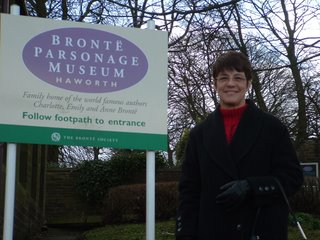



An early start saw us arrive in York by mid morning and an innovative car park at the Castle where we paid for parking by telephone!! The Castle is, as can be seen by the accompanying photo, a landmark in the city. A walk through the old town towards the Minster which is the largest medieval cathedral in Northern Europe takes you through the Shambles, a street that is so narrow that projecting first floors al most touch overhead.
The Minster itself is mind boggling. Daily services are held there and Stations of the Cross were perrformed while we were there (it being in the Easter week). The sheer size of the building begs the question of how this was built in the days before mechanisation and the octagonal chapter house where bishops metfor conferences for years ,s a masterpiece of decoration. Photo top left shows the dome.
Before leaving York we spent some time in the Castle Museum which was a journey through time brilliantly displaying how we lived in the past 2 centuries. Refrigerators were not common in England until well into the 1970's!
And so we proceeded to our rented cottage at C ononely a small village some 3 miles west of Skipton. The owner, who lived in the upstairs part of the house was most welcoming, and insisted on planning an itinerary for us so that we could fully explore the Dales, and she did a great job. We had dinner at the local pub ,The New Inn, and it was excellent.Their Steak and Kidney pie was as good as it gets, and fortified with a couple of glasses of Pino, we were more than happy to retire.
We took a train into Skipton the next morning - a whole $6 return -it was only a5 minute trip -and got some good advice from a fellow traveller about walking along the canal banks. The main attraction was Skipton Castle which was started in the 14th century and subsequently modified by Henry VIII and in the 17th century. It was partially demolished by that bloody Cromwell fellow after a 3 year seige which failed to break the defences. Talking to the custodian however, and asking the question of "how did they have enough tucker to last three years?" it seems that during the seige,other battles were fought nearby, and both the seigers and seigees were free to take part as a sort of gentlemans agreement!! Meanwhile the local supportive villagers raced in with refreshments.
This was an area which relied on wool production, and everywhere there are old textile mills once the centre of employment for towns and villages alike. A feed of "The best Fish'n Chips in the World" satisfied the hunger buds and predicated a very light evening meal.
When we got back to Cononley we decided to go to the Bronte Museum at Haworth, and although I was a bit lukewarm about the idea, found the exhibition quite fascinating and very educational. The history of the family was well presented and it was possible to feel the circumstances in which the tragedy (and success) of these young ladies took place. And Carol, of course, just loved it.
No comments:
Post a Comment